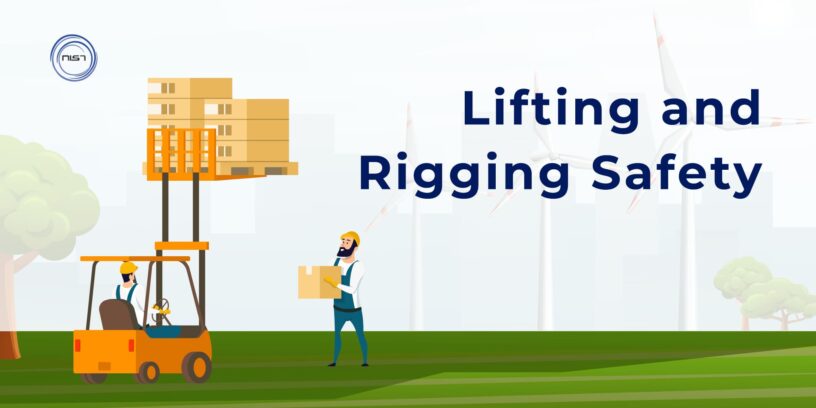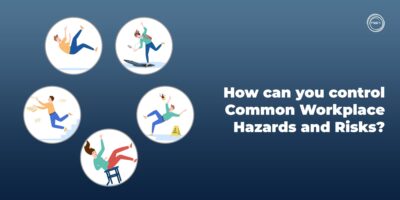The term “Lifting” refers to the activity of moving heavy loads, usually above ground level, using any type of equipment, including manpower and lifting devices such as cranes, derricks, hoists, and other similar devices to support the weight being moved. The term “Rigging” refers to the method or methods of attaching a load to lifting equipment (rope lines, tie-downs, etc.) or the process of attaching a load to a crane for lifting.
The rigging process also includes preparing the load (or rig) for movement, typically by securing the load to the hook of the lift line, or to some form of rigging structure that provides support and positioning while the load is lifted into position and during transportation to its destination, where it may be released or unloaded from the rigging system and placed on another piece of equipment, vehicle, container, or storage unit to move to its new location or destination after having been lifted by the rigging system.
When the loading is done on land, in a port or dock, the load will usually have to travel a distance from the place where the load was loaded onto a truck or other vehicle to the place where the load will be removed from the truck or vehicle, usually at another dock or warehouse facility.
Why is lifting and rigging training needed in industries?
The most common cause of injury on the job is that a worker who falls and is injured. An employee who falls while lifting or rigging a load can be injured by the load’s weight and movement.
Lifting and rigging safety equipment and procedures are important in the industry to prevent accidents. Lifting and rigging safety has two major objectives:
(a) To prevent injuries to workers (and bystanders),
(b) To prevent equipment and material from falling to the ground.
A third objective, the prevention of material flow disruptions caused by malfunctioning equipment, is often covered by these two goals and is an integral part of lifting and rigging safety. All of these objectives are frequently treated as if they are separate and unrelated, yet they are in fact linked. For example, a risk assessment of the entire lifting and rigging site may list the most frequent causes of falls (or “accidents”), and if any of these causes can be eliminated, fall hazards can be reduced or removed. Lifting and rigging safety can be achieved by providing a safe workplace.
As a result, the discussion of safety in the industry appears to be an endless repetition of this and that, with little connection between the goals. When risk management and safety design are used in tandem, they can eliminate the vast majority of the causes of workplace accidents.
Statistical report:
Between 2011 and 2017, the Census of Fatal Occupational Injuries (CFOI) recorded 297 total crane-related deaths, or 42 each year on average.
The Significance of Lifting and Rigging Safety:
Lifting and rigging operations involve a risk of injury. Workers must move loads that weigh hundreds, or even thousands, of pounds. To keep workers safe, employers implement safety procedures that ensure a safe working environment. In general, lifting and rigging safety in industries includes procedures, practices, and policies designed to ensure the following:
- The use of machinery and equipment
- Handling hazardous materials with regard to safety
- The safe lifting, rigging and loading of materials
- Loading and moving a specified load, or a specific weight
- Loading and moving materials safely
- Loading and moving a limited number of loads
- Unloading heavy or awkward loads
- Loading and moving a light load
- The safe stacking of loads
For safety reasons, the use of rigging should be planned and supervised to avoid the risk of improper rigging and to ensure a safe working environment.
Lifting and rigging hazards and control measures
Improper rigging:
On a typical rigging job, you may be dealing with overhead lifting, rigging, rigging accessories, rigging and lifting supplies, or any combination of these. Most often, rigging with slings is done when the rigging is so massive. You also use a sling when you want a specific configuration. It is imperative that riggers be trained to properly perform the rigging of heavy machinery. Any misuse of rigging equipment can cause injury to riggers or damage to machinery. Proper education and instruction are required for safe and reliable use.
Overload:
Improper rigging procedures can cause damage to the equipment and to the personnel involved. There is a high risk of injury to the operator, including overloading of machines and poor workmanship. Improper procedures can cause serious injuries to workers involved. Lifting techniques that are used should be planned to avoid injury to workers and damage to the load and machinery, to prevent falls or slipping, and the risk of overturning or sliding. Proper rigging techniques ensure that the load will not be damaged, and the crane will not be damaged or topple. For safety reasons, the use of rigging should be planned and supervised to avoid the risk of improper rigging and to ensure a safe working environment.
Manual and power lifting:
Power lifting refers to the use of power and electricity to manipulate a load. Power lifting can cause severe physical injuries such as electric shocks. The hazard is associated with the design of the power lift, which is used to lift, move, or change the load position and is not a part of the load itself.
Electricity can be hazardous to workers’ health because they may be subjected to sudden movements that can cause unexpected movements of the load or electric shocks. For safety reasons, lifting processes should be planned and supervised to avoid the risk of injury to workers.
Injury to the operator:
The lifting procedures used can also result in physical and psychological injury to the operator. Inadequate training of the operator and incorrect use of lifting equipment are reasons for injuries to the operator. Proper lifting methods should be planned and supervised to avoid the risk of injury to workers.
Falls from great heights
Lifting workers can be subjected to falls from a height. The dangers of falls from height are associated with the height at which they are working, and the height of the equipment. Workers may fall from equipment and heights above six metres, resulting in a head injury, a spinal injury, and broken bones. Workers may be exposed to falls from machinery and vehicles. There are also high risks of injuries associated with the use of cranes and equipment. Injuries can occur as a result of the use of cranes, or because workers are forced to work at an extreme angle.
As mentioned earlier, as these are through proper safety training, we could mitigate or avoid these accidents, injuries, etc. through proper safety training.
Crushing injuries:
Crushing injuries can occur when workers are involved in industrial activities, when workers or equipment is pushed, or crushed. The dangers of crushing injuries are associated with heavy loads, speed, and pressure. Workers can be crushed by machinery and equipment. There are also high risks of crushing injuries as a result of overloading, or the use of machinery. Workers can be crushed by machinery and equipment when they are forced to work at an extreme angle or at extreme heights. Crushing injuries can result in immediate injury and death. Proper safety measures should be planned and supervised to avoid the risk of crushing injuries.
Learning outcomes:
This training program helps crane operators as well as the entire lifting and rigging team understand many facets of crane work and the safety requirements at the work site. Also, it focuses on the roles and responsibilities of each of the different workers that make up a crane operation safely. Our practical demonstrations and exercises use real-life cases to teach you about crane operations in detail, from the basics of lifting and lowering to the most complicated handling issues involving cranes and heavy-duty equipment such as forklifts and backhoes, etc. Moreover, we would discuss various aspects of crane operation and maintenance and cover topics such as hazard recognition; crane types, components, and set up; its classifications; employer responsibilities; load movement and hoisting; working around overhead power cables; emergency response, types, selection, and use of rigging material, rigging material inspection; wire rope, connectors, slings, chain, and synthetic slings.
Why NIST!
If you are an employer in the rigging industry, you need to provide appropriate training to all your employees to protect the health and safety of all those who may be working around and on your machinery. With new machinery or equipment, you should ensure that the riggers and the lifting equipment are in accordance with your safety regulations or are qualified to operate them, as rigging can be a dangerous job and we strongly recommend that riggers get training in all aspects of rigging. This may include the following: Training on the equipment, the hazards and how to use the equipment, Safety training, Training in safety awareness, education about different types of machinery, lifting equipment and their hazards. Happy Learning!
For more information on the training, please contact our client service team at +91 9384663536 or email us at corporate.sales@nistinstitute.com.












Leave a Reply